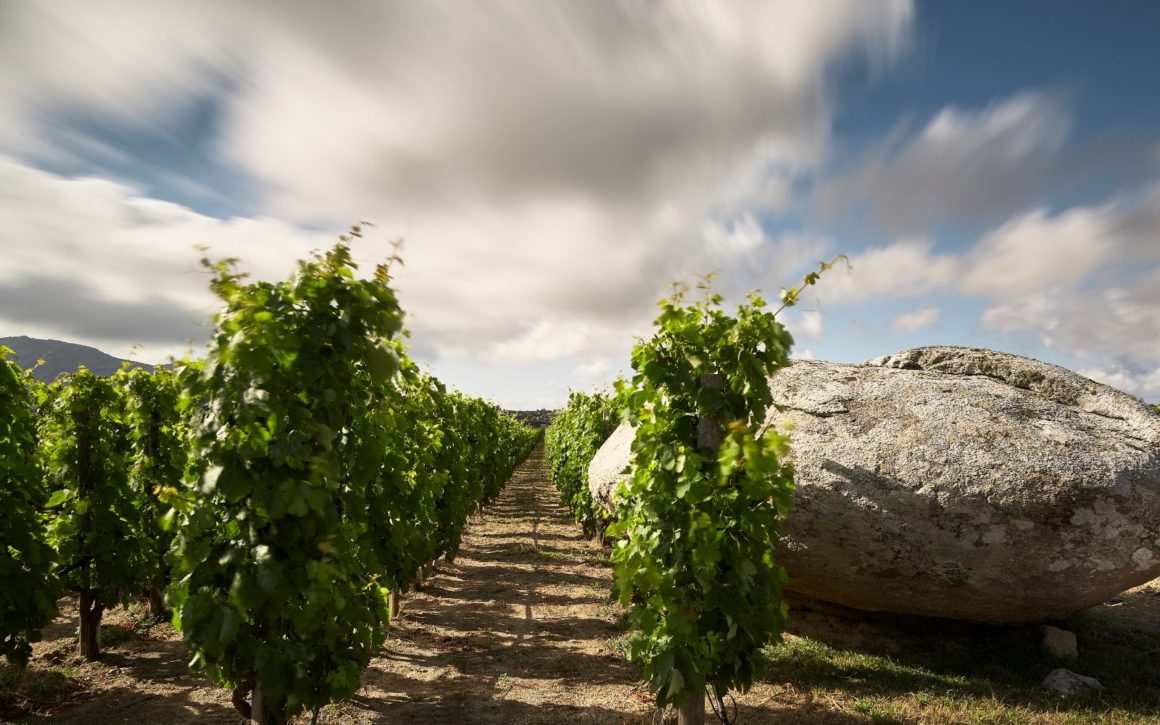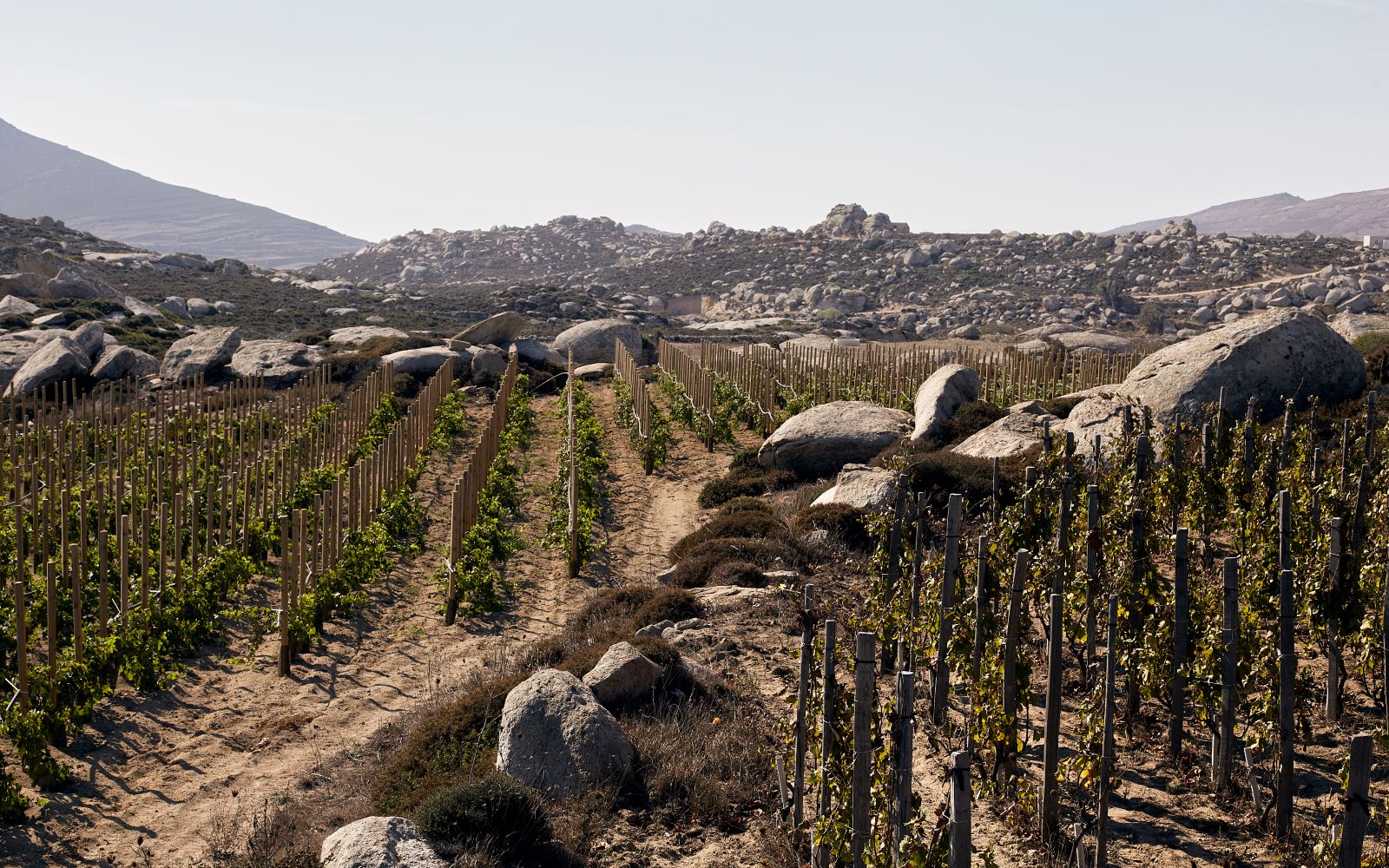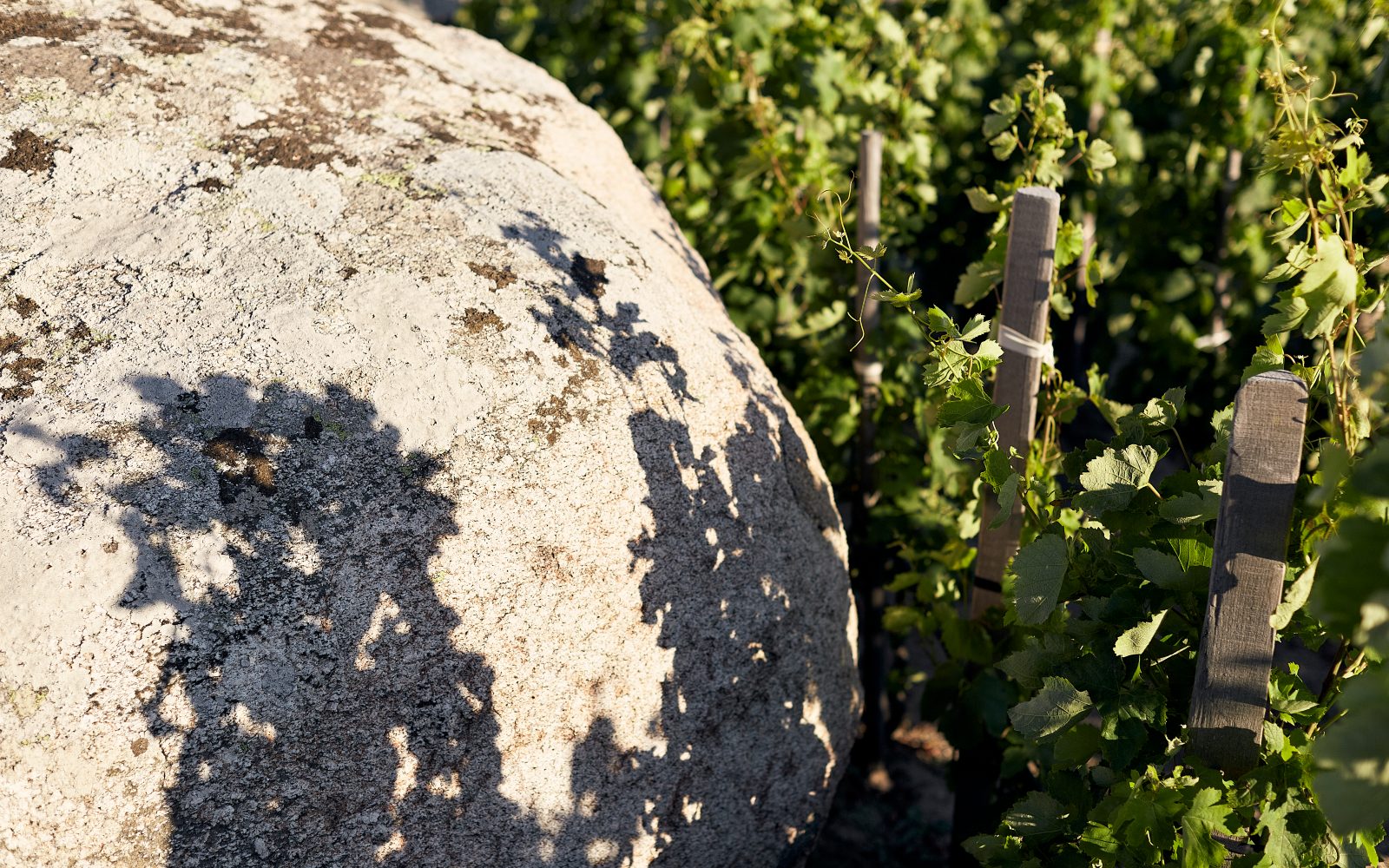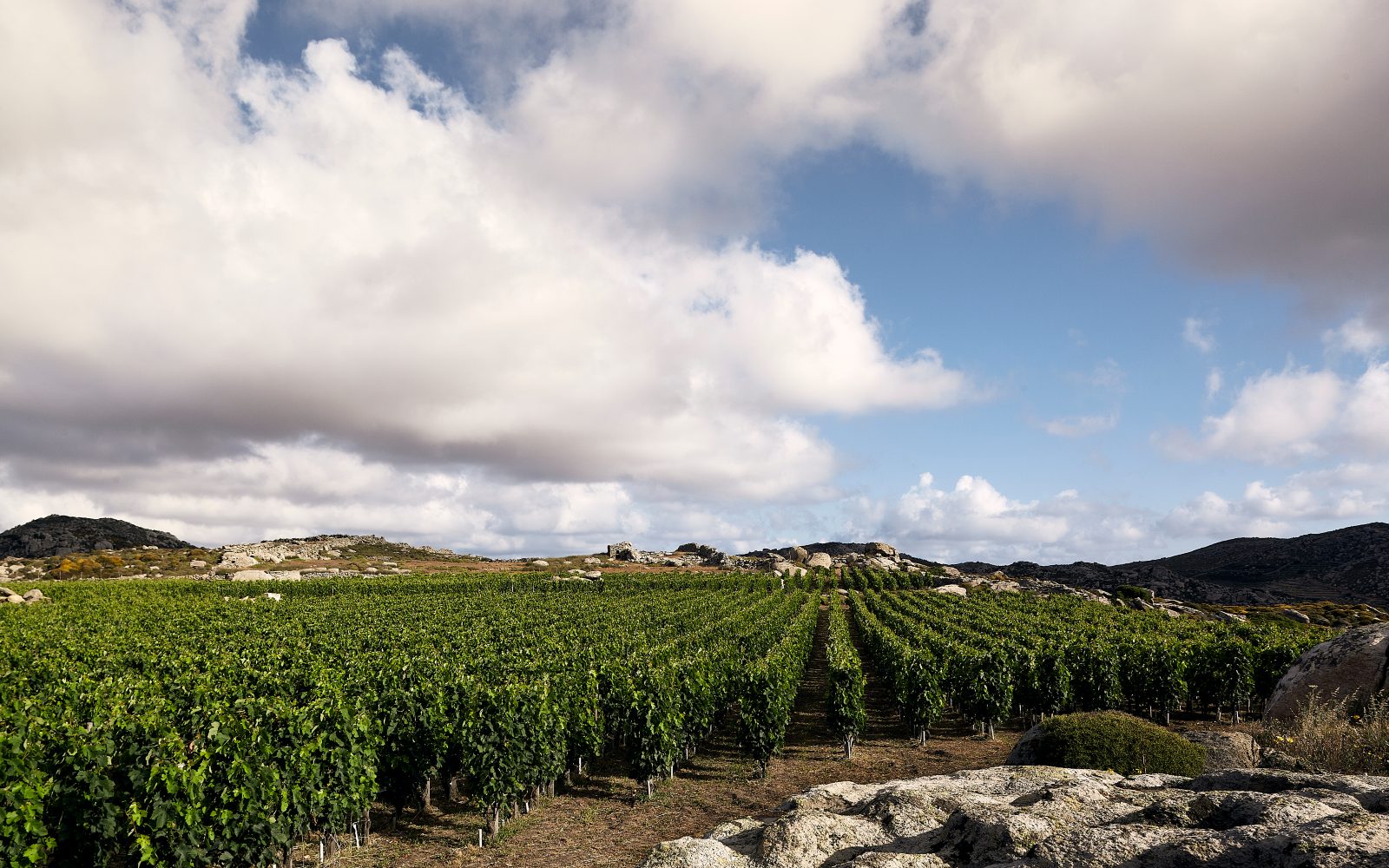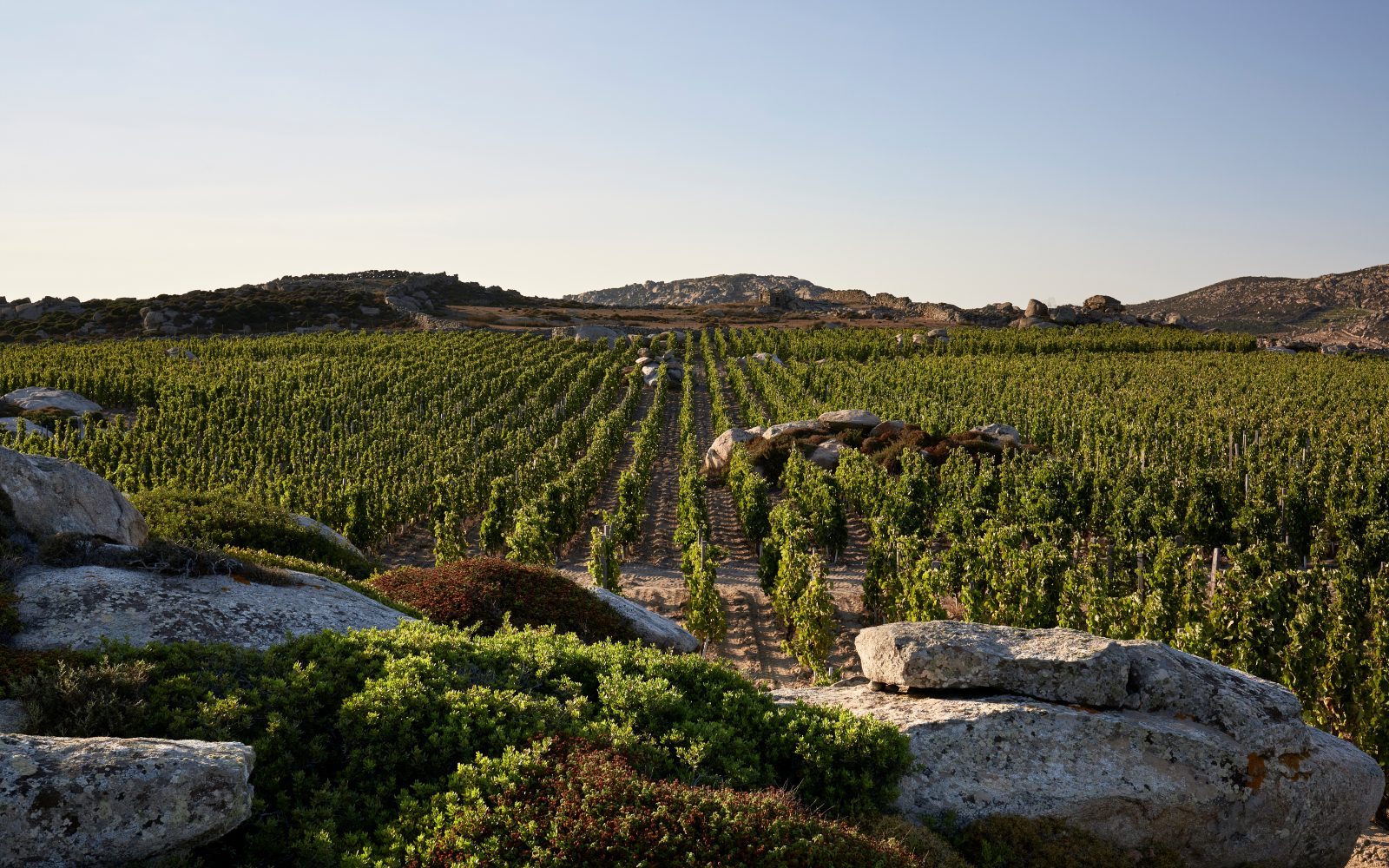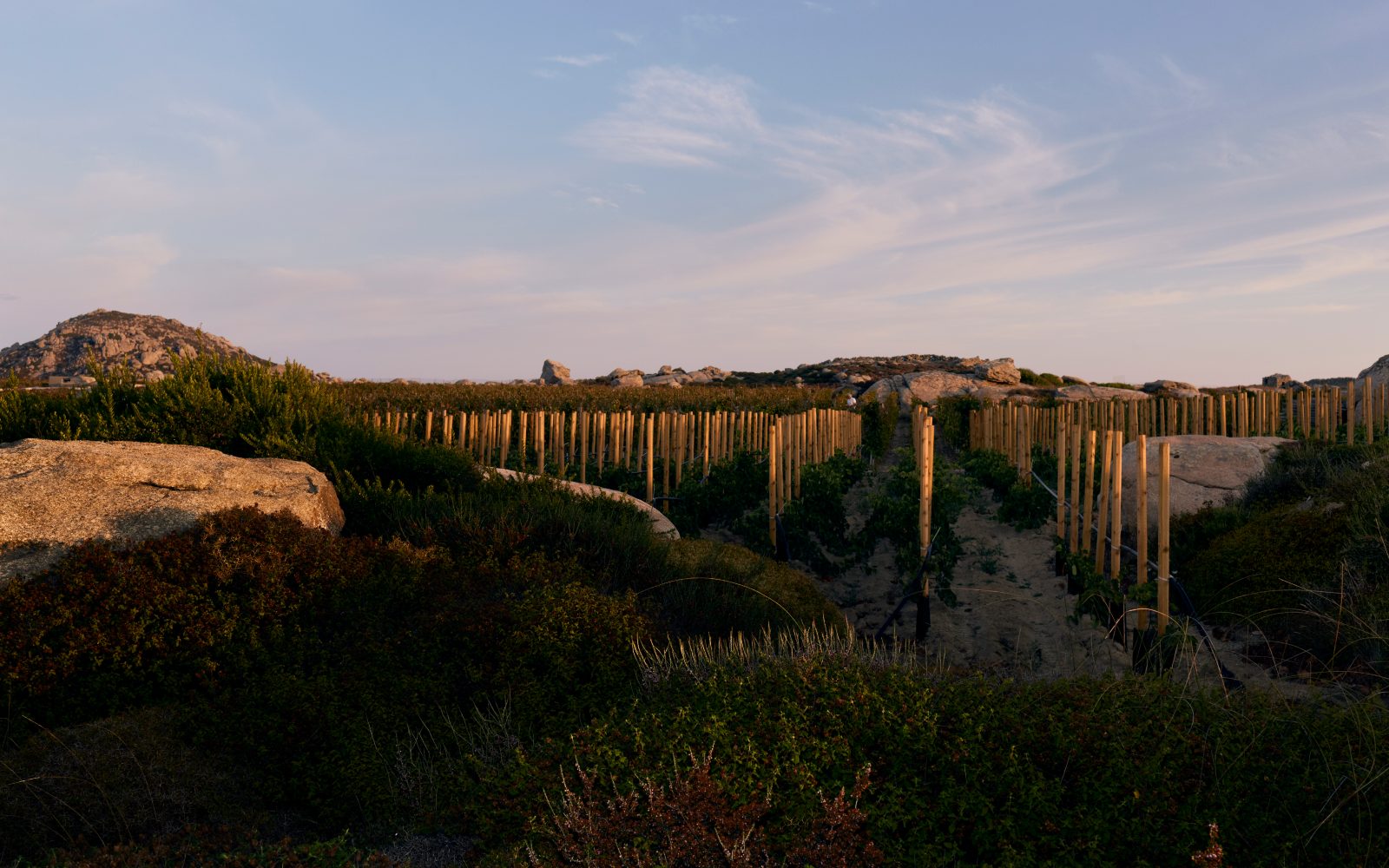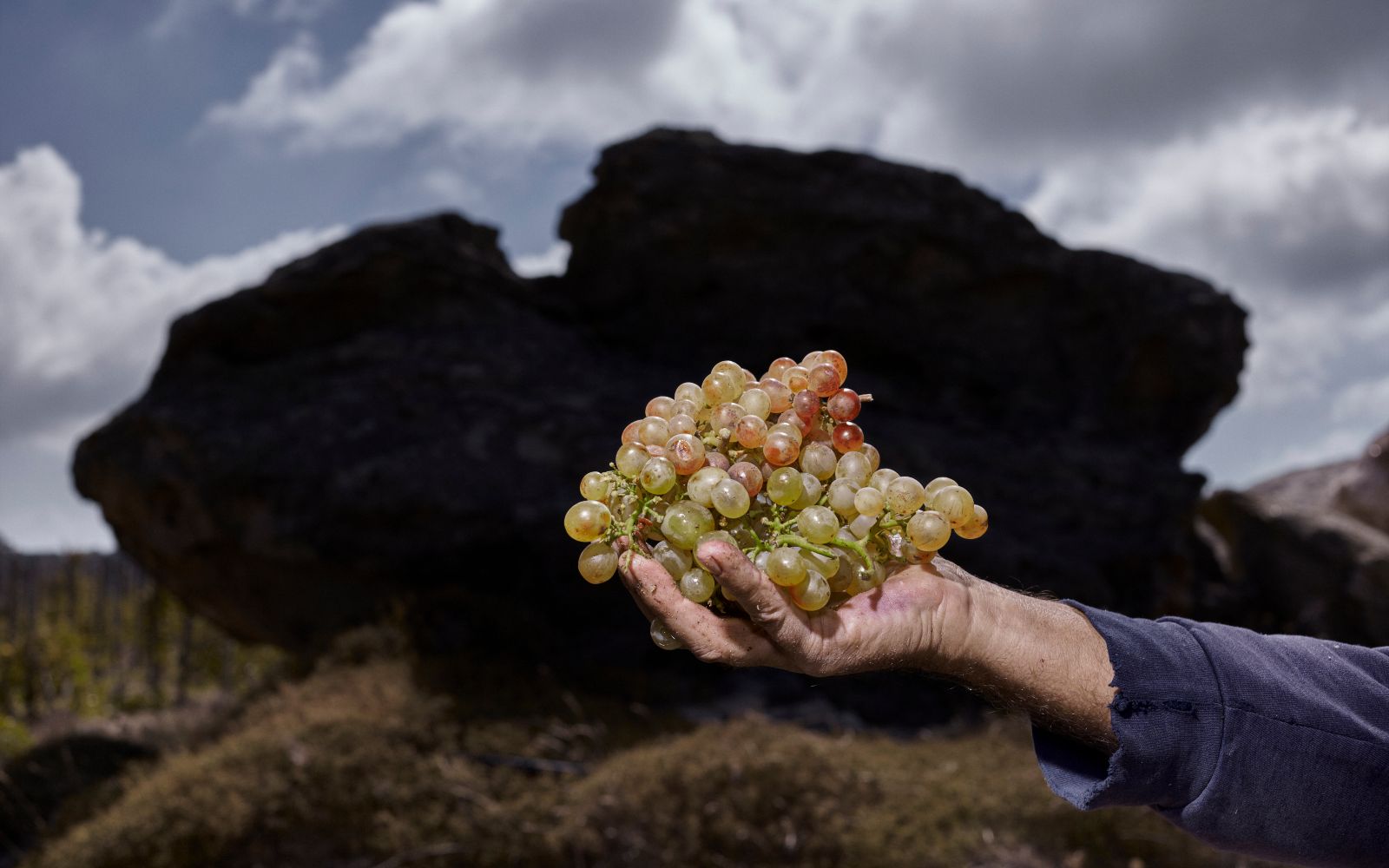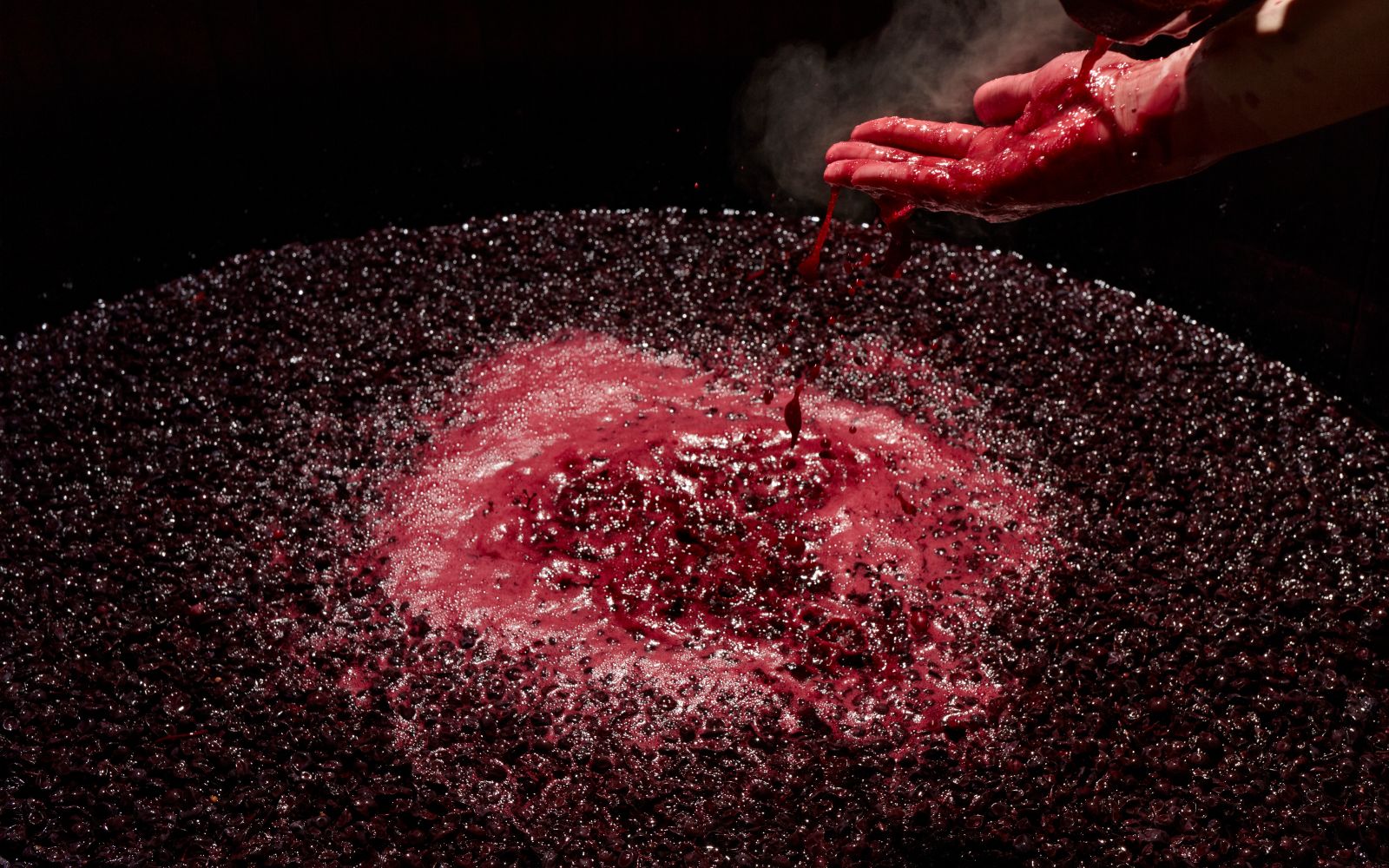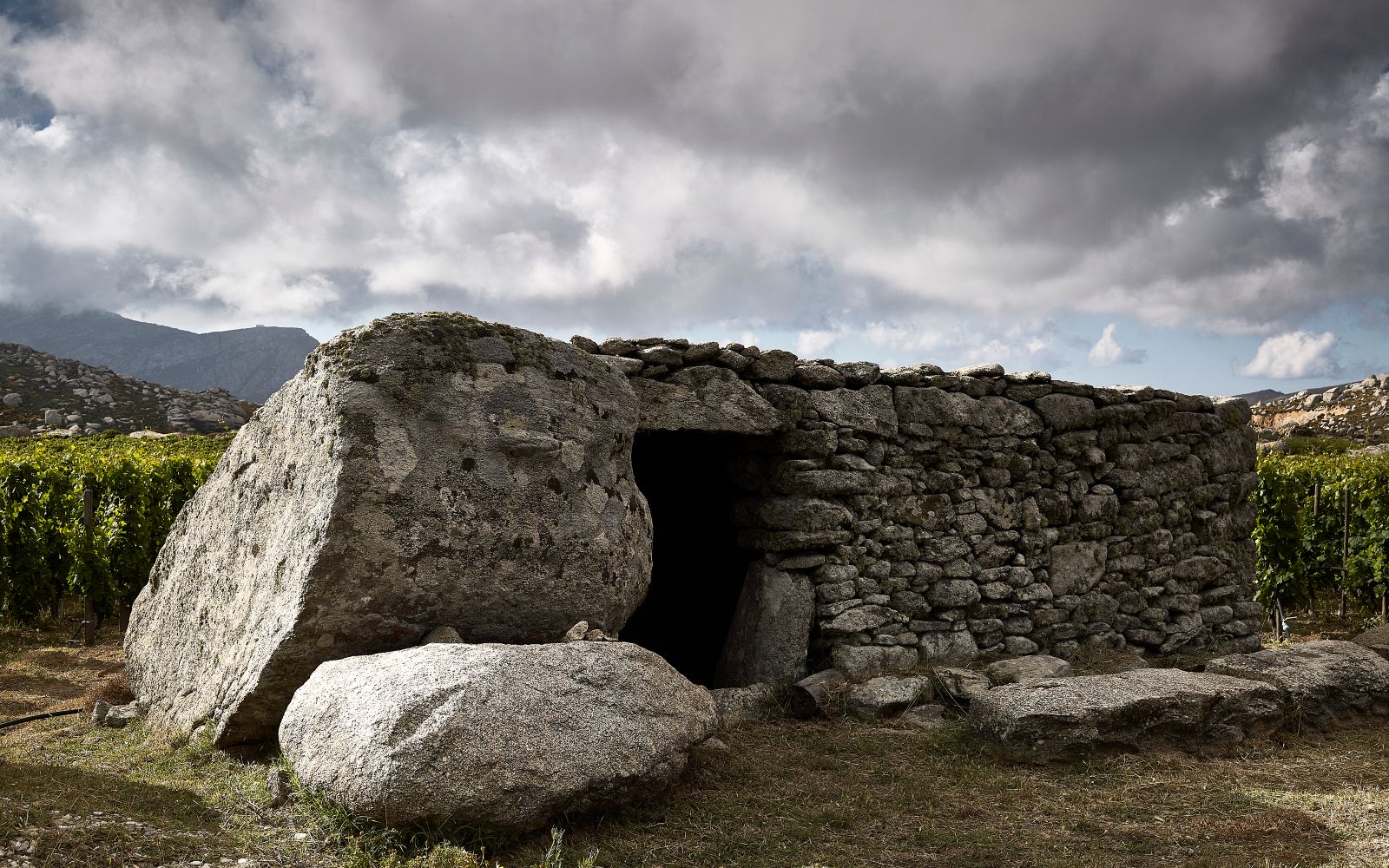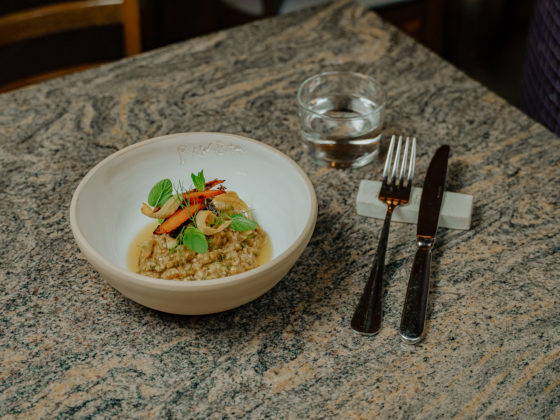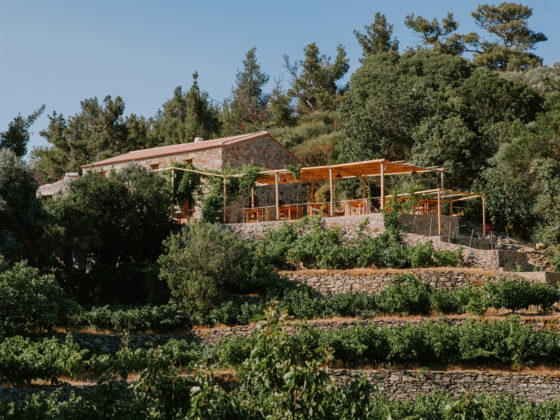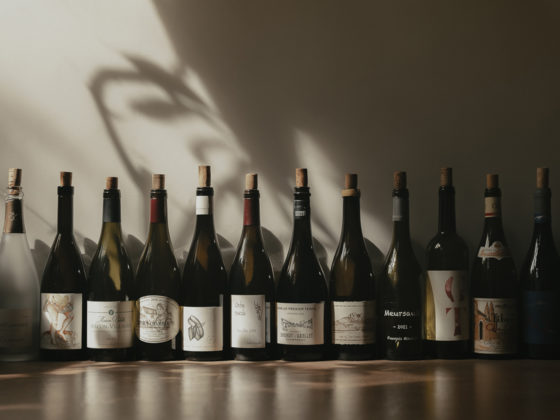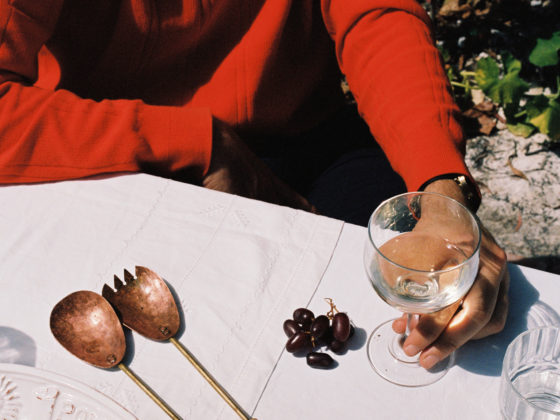It all started with the vision of philosopher Alexandre Avatangelos who along with Gérard Margeon, executive head sommelier for Alain Ducasse restaurants worldwide, wanted to create a world class wine in the heart of the Aegean Sea, in Tinos.
Tinos is an island with a captivating energy that brings together the natural elements: the sea, the wind, the light and the shade, the rock and the vines in an atmosphere both silent and alive which mixes magnitude and intimacy. The landscape of Tinos consists of terraces suggesting an intense agricultural activity. The origins of wine production dates to Prehistory with traces of the vine in this granite landscape, swept by violent winds, in Antiquity and then in the Middle Ages. Historically, the grapes were pressed and vinified on the spot, given the difficult access and distance to the villages. Wine presses were built in sheltered places to protect themselves from extreme wind. These stone places are the origin of the name of the place “Stegasta” (“covered” in Greek).
Legends and myths accompany the moon-like landscape of Falatados and Volax and the famous round granite rocks. It is said that they are the remnants of a mythical battle between gods and giants, that the volakes (large cannonballs) took their shape from the sea, or that they came from a shower. According to geologists, they are granite rocks that have been formed 15-25 million years ago and with the changes in temperature, in humidity, they have been induced by the wind, they have been developed and developed into a spherical shape.
It is in this unusual landscape dotted with huge granite boulders, on a preserved area of exceptional natural beauty, that Alexandre Avatangelos created the vineyard of T-OINOS more than 20 years ago. This extraordinary project, focusing on the expression of quality of a unique terroir, today ensures the production of elegant, vibrant, fine wines.
T-Oinos winery now covers 13 hectares of vines being currently the leading producer of the island. The microclimate and soil of the region indicated the suitable indigenous varieties to be planted, the ones already existing in Cyclades since antiquity: Assystiko and Mavrotragano. The result is fine fine wines expressing the uniqueness of the granitic terroir.
